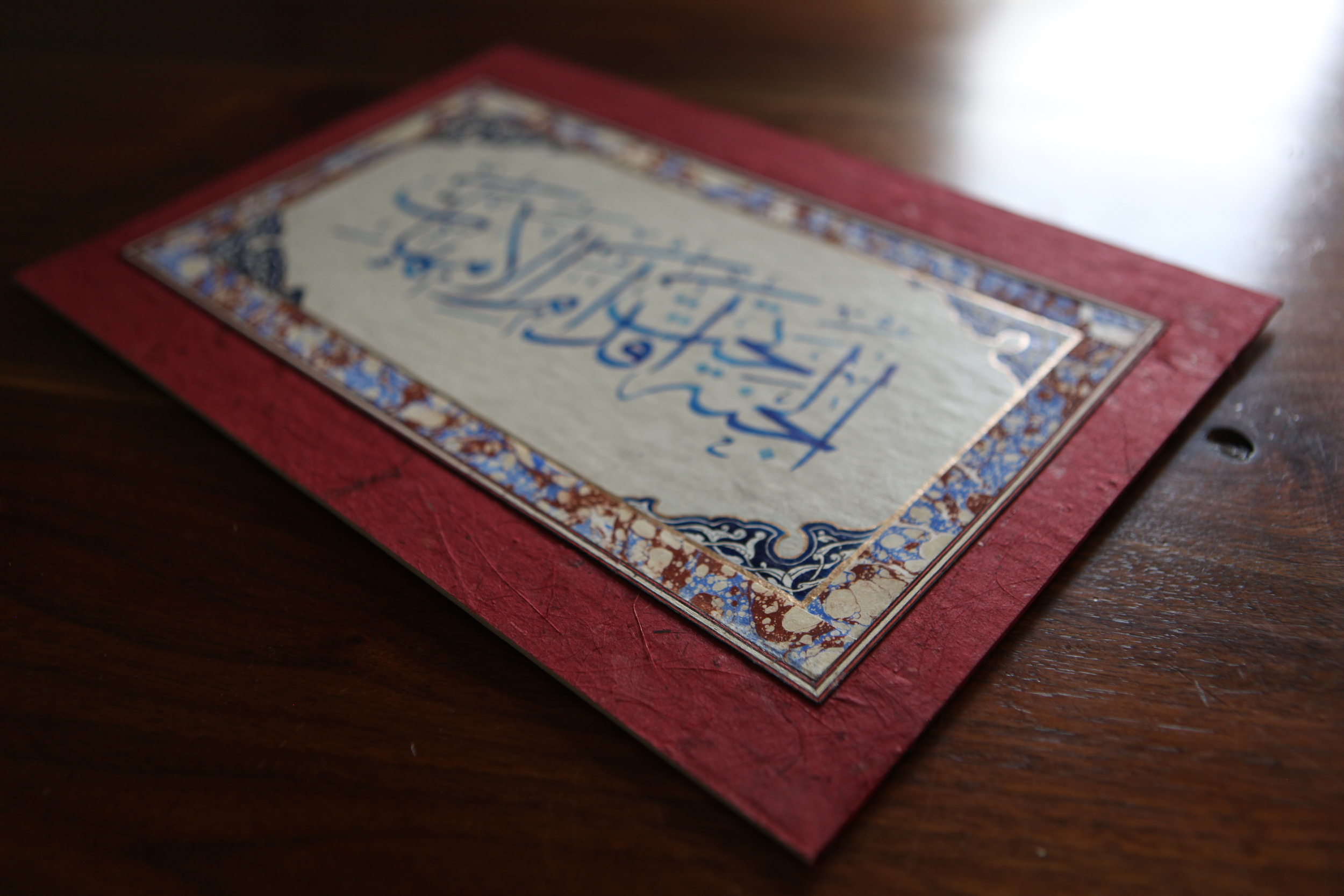When I create a piece of calligraphy, I try to be responsible for every aspect of the equation.
This often starts with hand-making the paper. I like mulberry, but I occasionally also use cotton, hemp, and flax fibers. Sometimes I add inclusions like the bark from a special tree, shards of newspaper from a specific city, or grass from a region of the world.
To get handmade paper ready for calligraphy, there is a lengthy process of preparation. It begins with dyeing the paper.
The papers are then starched with boiled wheat starch, alum, and fish glue and finally treated with an egg-based coating called ahar.
Finally the papers are burnished with agate until they are at a state where they can accept the ink. The process takes many hours per sheet and is the traditional way of preparing paper for Islamic calligraphy that goes back more than a millennium.
I then compose the calligraphy. While I use many styles of contemporary calligraphy in my graphic design work, I only use traditional calligraphy in my original pieces.
I then border the piece with decorative marbled paper, made from my own handmade paints that I float on a thickened water.
Sometimes I'll use some wooden inlay strips to add to the decorative borders.
In this way, it is possible to define every aspect of the piece's final form. This is a tradition that I learn from my teacher, Mohamed Zakariya.










































